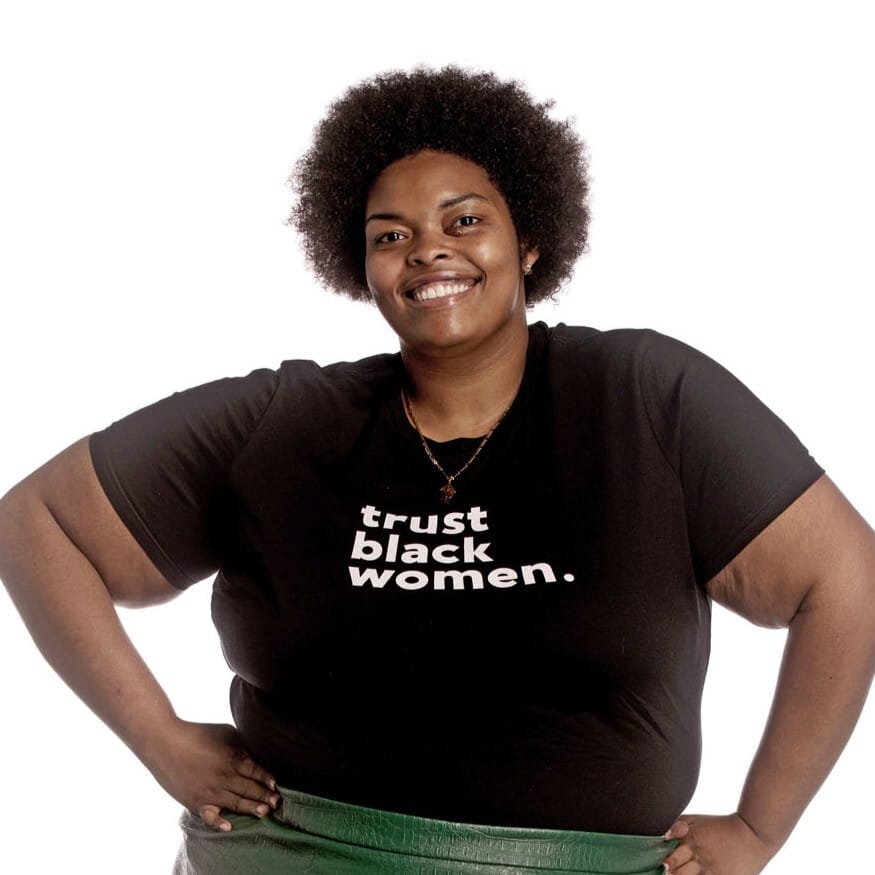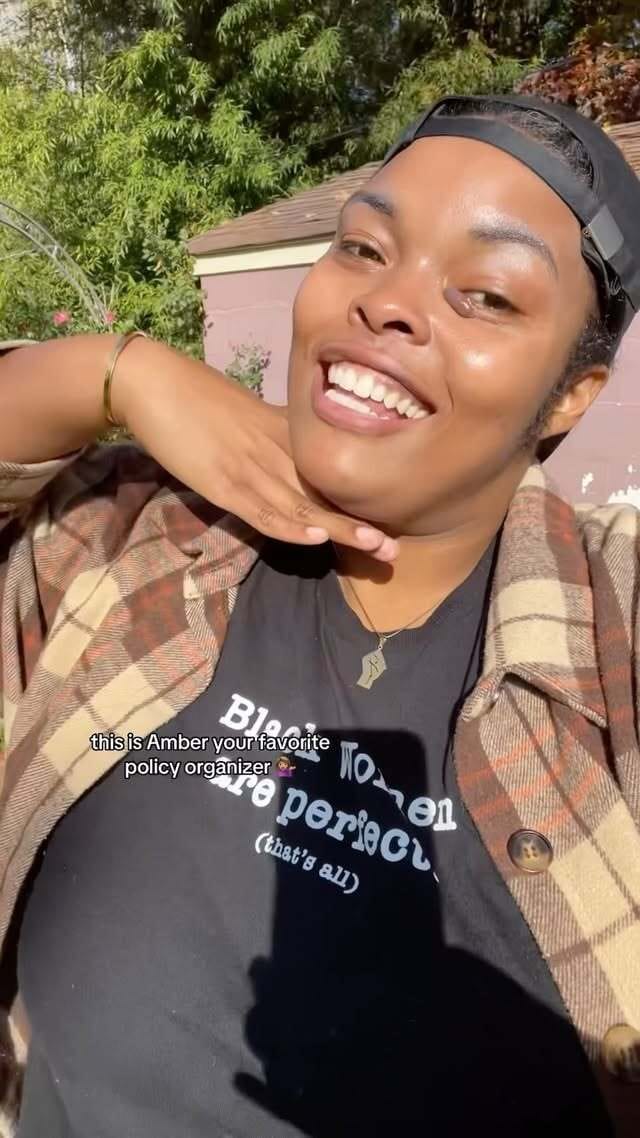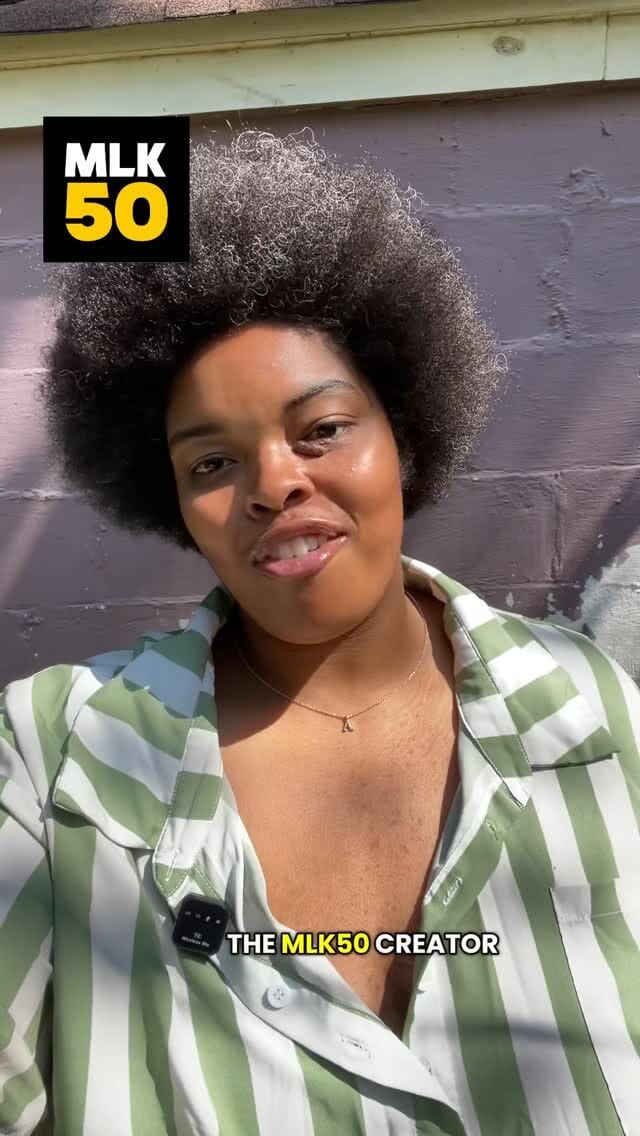In partnership with: Outpost for Ghost publishers

(Photo courtesy Amber Sherman)
A creator, a newsroom, and a 664% engagement spike
When Amber Sherman (a member of this year’s Project C ONA Creator Cohort) started The Law According to Amber, she set out to make civic life legible for the people most affected by it.
With more than 60,000 followers across Instagram, TikTok and a podcast, Sherman has become a trusted voice for Memphians navigating complicated policy landscapes. Her work has evolved from activism to explanatory – public service journalism designed for the feeds where people are already spending their time.
Here’s Sherman in 2024 breaking down a government accountability question:
Now, as Creator in Residence with MLK50: Justice Through Journalism, Sherman’s pairing that community-first approach with a newsroom’s mission and reporting muscle – a partnership that shows how creator journalism and institutional journalism can strengthen one another and grow the audience for more traditional newsrooms.
Since the beginning of the partnership in March, Sherman has helped drive a 664% increase in MLK50’s social interactions.
“I’d been making social media videos for a little while,” said Sherman explaining the path to the MLK50 collaboration. “I made a kind of investigative journalist type piece about something that I was concerned about and I commented, ‘I’m really like an investigative reporter,’ and someone from MLK50 commented back: ‘Yeah, you are. Have you ever thought about pitching something?’”
Sherman didn’t let the opportunity pass her by. She pitched the creator in residence model, which she’d seen in action in TikTok-er Garrison Hayes’ partnership with Mother Jones.
“But I knew what I was going to be doing was nothing like what Garrison was doing,” Sherman said. “So I was like, I'm just going to take the name and marry it with this thing that I really want to do – which is make these explainer videos for people that might make them more likely to actually advocate for themselves and their neighbors.”
Sherman now posts two to three videos a week in collaboration with MLK50.
“I would love to see more creators in residence,” she said. “And I would love to see people making more content that feels more educational and assuring than fearful.” 
How MLK50 brought Amber in
From MLK50’s side, executive director of editorial Adrienne Johnson Martin says the relationship began with MLK50 doing its homework on the model.
“We knew Amber in Memphis very much as a newsmaker and an active policy organizer,” Martin said. “She had seen the program at Mother Jones and pitched it. So I started reading up about what they did and actually talked to the people at Mother Jones.” 
Amber’s explanatory work aligned with the direction Martin wanted to lean into at MLK50, so she started the process of adapting the model for her own newsroom.
“I thought that Amber’s idea was really interesting but wanted to make it within the mission and the values and the things we really want to do,” said Martin. “Like really making journalism more of an exchange – a partnership between community and journalism so that people don't feel like they're outside of it, that it's not extractive.”
Getting the newsroom on board wasn’t automatic. Martin recalls that some colleagues were initially skeptical.
“There were some concerns on the staff because Amber is a newsmaker. How do you navigate that?” asked Martin. “Our thinking around that has evolved, though, because that really is based on a legacy media kind of objectivity model.”
The breakthrough came when Martin defined guard rails – Amber is only posting civic education that doesn’t impact her, or MLK 50, when Amber becomes a news source and her scripts and videos are reviewed before she posts – and framed the residency as an extension of MLK50’s values rather than a departure.
“She sticks to explaining policy and providing civic education but it's not things that don't affect her. She lives in Memphis and we can't really avoid that,” said Martin. “Our thinking is that if she sticks to educating rather than endorsing, we're fine. Of course, some people might perceive some of the things she says as endorsement. We believe that abortion is health care, trans rights are human rights and we interrogate power, so the education she does reflects that worldview is non-negotiable.
“The very thing that [newsrooms] are afraid of is actually what makes Amber so powerful with our audience,” said Martin. “Because she's doing this work for the community, it makes her highly credible. And that's what we want – to have the trust of the community.”
By positioning Sherman’s residency as aligned with MLK50’s purpose, Martin was able to turn skepticism into support.
“I think as she's done work, and the staff sees it,” Martin said, “they get that it's working for us, not against us.”
Why this model matters
Creator-in-residence arrangements let newsrooms plug into trusted, platform-native voices while giving creators editing support, standards, and institutional backing. They’re not a replacement for the work done by newsrooms; they’re a way to extend it – meeting communities where they already are, and building two-way bridges between real people and beat reporting.
Sherman’s residency has allowed MLK50 to experiment with short-form, creator-led video while maintaining the editorial rigor the newsroom is known for – and both Sherman and Martin see impact firsthand.
“People will DM me and say [they] never understood this policy until [I] explained it,” said Sherman.
It’s also allowing Sherman and MLK50 to learn from each other. Martin says Sherman has been a fast study in evolving her explanatory work to bring an audience along that might not be as familiar with the policy lexicon.
“At the beginning, I think Amber was talking to an audience with the idea of, like, ‘they know what I'm talking about.’” said Martin. “And what we have sort of adjusted and helped her think about more is how sometimes we use terms and we think everybody knows what they mean. But they don't.”
At the same time, Sherman’s short-form instincts have helped the MLK50 staff to learn how to reach people who might not read a 1,200-word article – exactly the kind of complementary capacity local news needs right now.
What comes next
Sherman’s ask is clear: more residencies, more educational content, less fear-mongering.
“That [reassuring, educational approach] is the thing that I really want more people to invest time in instead of, like, scaring the hell out of people,” she said. 
For newsrooms and funders, the takeaway is equally clear: this is a workable template: A creator with community trust + a newsroom with editorial rigor = journalism that reaches further and lands deeper.

This newsletter is presented in partnership with Outpost 🪐
Journalists who take their media business seriously use Outpost.
Outpost is not a platform. It’s a set of monetization and growth tools beloved by Ghost publishers like Hell Gate, 404 Media, Tangle, The Lever, and Tablehopper.
What can you do with Outpost? For one thing: promote your paid subscription across your website! Simply load your message into the Auto Display tool one time and show it inside every story with a flick of the big on/off button. Try it out on your Ghost blog when you start a free trial today.
🏛️ 5 tips for newsrooms considering a creator-in-residence
Start with shared values, not shared formats – MLK50’s success began when Adrienne Johnson Martin aligned the partnership with the newsroom’s mission: journalism as a public service rooted in community. Don’t just copy a format. Make sure the collaboration advances your core purpose.
Do your homework on the model – Before saying yes, Martin studied Mother Jones’ creator-in-residence program and talked with their team. Research existing models and adapt them to your newsroom’s editorial structure and audience goals.
Commit to fair, transparent compensation – A residency isn’t an internship or a favor. MLK50 compensates Amber for her expertise and audience reach – a standard that recognizes creators as professional contributors. Budget for this work from the start.
Set clear guardrails early – Address skepticism by defining boundaries up front. MLK50 established that Amber’s videos would focus on civic education, not advocacy, maintaining credibility while preserving her authentic voice.
Measure what matters and share the wins – A 664 percent increase in social engagement didn’t just validate the partnership; it helped the newsroom see impact in real numbers. Track metrics that demonstrate reach and community connection, not just vanity stats.
***
🎥 5 tips for creators considering a newsroom partnership
Know your value (and your values) – Amber’s pitch worked because she knew what she brought (audience trust, civic storytelling) and what she wanted to protect (her authenticity). Be clear on both before approaching a newsroom.
Bring ideas, not just influence – Sherman didn’t wait for a job description; she pitched a model. Newsrooms respond to creators who come with vision – a plan for how their work complements, not competes with, traditional journalism.
Expect feedback and learn from it. Amber adjusted her explainers after editors pointed out policy jargon that confused viewers. Be open to editorial guidance that helps you reach more people without losing your tone.
4. Protect your independence (and your paycheck) – Make sure compensation reflects your professional value and the time it takes to produce high-quality journalism. Negotiate payment terms up front and confirm that editorial review won’t mean editorial control.
See it as a partnership, not a platform – A newsroom can give you access to editors, data, and infrastructure; you give them new reach and credibility. When both sides treat it as mutual learning – not content extraction – everyone benefits.
For more guidance, check out the American Press Institute’s guide to influencer collaborations.





